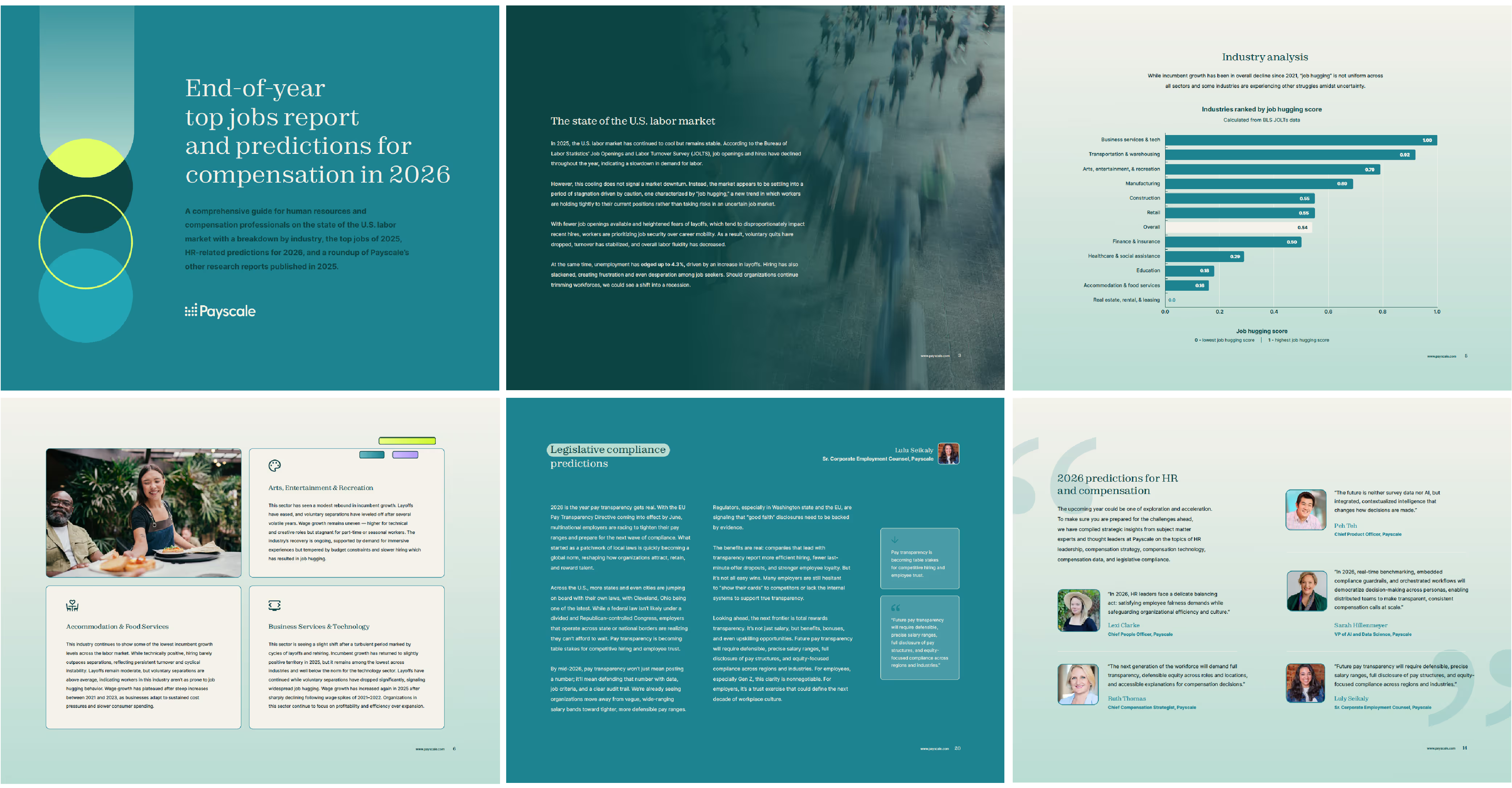Research Reports
Employees do not perceive that pay is fair even when it is and are more likely to seek a new job because of it. Our 2025 Fair Pay Impact Report shows that wages are fairer now than in 2021. Unfortunately, perception of fair pay has gotten worse.
Employees who think they are paid below market are 45 percent more likely than those who think they’re paid at or above market to seek a new job in the next six months.
In a troubled political and economic landscape, it is more important than ever for organizations to invest in compensation data and strategy to build pay confidence and address pay misinformation to attract and retain top talent.
Payscale’s Fair Pay Impact Report has three major findings:
- Employees paid at or above market believe they are paid below market.
- Employees are more likely to leave if they don’t believe they are paid fairly.
- Pay transparency is correlated with a decrease in intent to leave.
The ID is set to default '5900', don't forget to update it if needed.


